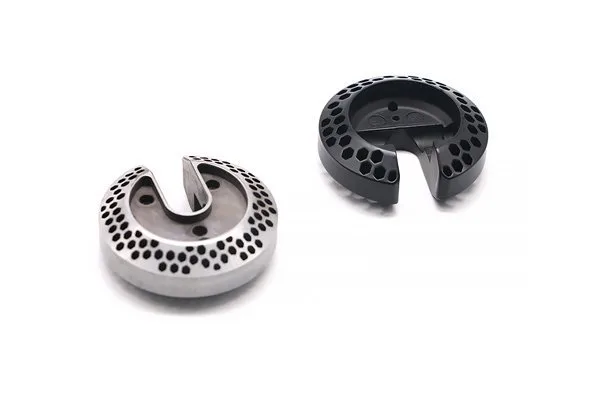Introduction: The World of Aluminum
Have you ever marveled at how something as lightweight as aluminum can be a key player in buildings, vehicles, and electronics? It’s fascinating, isn’t it? Aluminum is not just your everyday metal; it’s a marvel of engineering and design. One of its most intriguing characteristics is its melting point. But you might wonder, how does the melting point of aluminum impact its strength and the processes used to manufacture it? In this article, we’ll dive deep into this question and explore the intricate relationship between aluminum’s melting point, its mechanical properties, and the various manufacturing methods that harness its unique qualities. So, grab a cup of coffee, and let’s get started!
Understanding Aluminum: A Quick Overview
Before we delve into the melting point and its implications, let’s take a step back and understand what aluminum really is. Aluminum is the third most abundant element in the Earth’s crust and is known for its lightweight, corrosion resistance, and excellent conductivity. It’s like the Swiss army knife of metals—a trusty companion across many industries.
What is the Melting Point of Aluminum?
The melting point of aluminum is around 660.3 degrees Celsius (1220.5 degrees Fahrenheit). But what does this mean in practical terms? Well, this temperature is where aluminum transitions from a solid state to a liquid state. It’s akin to waiting for ice to melt on a warm sunny day; the moment it reaches that perfect temperature, everything changes.
But why does this melting point matter? It’s not just an interesting scientific fact; it has significant implications for how aluminum is used, shaped, and transformed in various applications.
Why Does Aluminum’s Melting Point Matter?
When we consider the melting point of aluminum, it’s essential to think about how it ties into its strength and the manufacturing processes that utilize it. Here are a few key points to consider:
Aluminum Alloys: A Beautifully Complex World
Aluminum isn’t a one-size-fits-all material. In fact, it’s often blended with other elements to create aluminum alloys that enhance specific properties. For instance, adding copper, zinc, or magnesium can significantly change aluminum’s melting point and strength characteristics. Think of it like baking cookies; a pinch of salt can change the flavor profile entirely!
Influence of Alloying Elements on Melting Point
Each alloy has its unique melting temperature. This variation can impact not only the thermal properties but also the mechanical characteristics. Consider aluminum alloy 6061, often used in structural applications, which has excellent corrosion resistance and good weldability. However, its melting temperature is slightly different than pure aluminum.
So, when we talk about aluminum’s melting point, it’s essential to consider what specific alloy we’re discussing. The properties of the final product can hinge on this very detail!
Impact of Melting Point on Mechanical Strength
Mechanical strength is often influenced by temperature changes. When aluminum is heated to its melting point, it can absorb heat without changing state. This phenomenon, called latent heat, allows manufacturers to shape aluminum without compromising its strength. Let’s break this down further.
Manufacturing Processes of Aluminum: A Melting Point Perspective
Aluminum can be processed through various methods, each with its pros and cons depending on the melting point. Here’s a closer look at some common manufacturing processes:
Casting
Casting involves pouring molten aluminum into a mold. This process is highly influenced by the aluminum alloy’s melting point, as it dictates how fluid the metal will be when cast. A lower melting point alloy can fill intricate molds more effectively but may have different post-casting properties.
Extrusion
Extrusion is another method where aluminum is forced through a die to create specific shapes. Here, maintaining a temperature slightly below the melting point is crucial for achieving the best results. The extruded material needs to solidify quickly to maintain its shape and strength. Visualize squeezing toothpaste out of a tube; if it’s too hot, it just spills everywhere!
Welding
Welding of aluminum is another area where melting point knowledge plays a critical role. During the welding process, the area being welded should melt just enough to fuse, but not so much that the entire component is compromised. It’s a delicate balance, much like a tightrope walker finds equilibrium.
The Connection Between Temperature and Strength
Let’s not forget the role of temperature in the final product’s performance. As aluminum is heated, it can reach a point where the atoms become so energetic that they lose their alignment. This can lead to a decrease in strength and stability. It’s like a building designed with no foundation—the higher you go, the more likely it is to collapse!
Best Practices in Aluminum Manufacturing
To ensure the highest quality of aluminum products, manufacturers should consider the following best practices:
Future Trends and Innovations in Aluminum Processing
As technology continues to evolve, so do the methods and processes used in aluminum manufacturing. Innovations like additive manufacturing and advanced numerical modeling techniques can lead to more efficient ways to manipulate aluminum without compromising its properties.
Conclusion: The Melting Pot of Metallurgy
In summary, the melting point of aluminum plays a pivotal role in determining its strength and the various manufacturing processes that utilize it. Understanding this relationship allows engineers and manufacturers to develop innovative solutions while ensuring quality and performance.
Each detail, from the choice of alloy to the conditions under which the metal is processed, can dramatically affect the final product. So, next time you see an aluminum product, take a moment to appreciate the science and engineering that went into its creation. It’s a beautiful dance of temperature and strength, much like a well-choreographed ballet.
By grasping the concepts discussed in this article, you can broaden your horizons regarding aluminum and its myriad applications. Isn’t it exciting to think about how something as simple as a melting point can lead to the creation of extraordinary tools, vehicles, and buildings? Alchemy, indeed, awaits at the melting point of aluminum!
—





